Means of emotional expressiveness of the artistic image in painting. Expressive means
How does art influence? To common funds artistic expressiveness include: composition, form, rhythm, proportions, texture, color, tone, intonation, etc. They can significantly enhance the impact of a work of art, affect a person's attitude, evoke certain images, associations, memories.
Most effective tool art to represent the numinous is, anywhere, the sublime. First of all, in architecture. And it is in this art that the sublime appears at the most remote stages. It is too difficult to avoid the impression that this feeling began already in the Paleolithic era. The dark sense of solemn grandeur, as well as lofty and pompous gestures, is actually quite a virgin feeling, very common even among "primitive" people. Undoubtedly, by the time mastabas, obelisks and pyramids were built in Egypt, this stage had already been reached.
Composition Composition is the construction of a work of art, determined by its content, character, purpose, and largely determines its perception. K. gives the work unity and integrity, subordinating its elements to each other and to the whole. The murals of Sofia are characterized by clarity of composition, expressiveness of images, colorfulness, organic connection with architecture.

There is no doubt that the builders of these magnificent temples of this Sphinx of Giza, who in the spirit evoke the feeling of the sublime and numinous that accompanies it almost like a mechanical reflection, were already aware of this effect and they pursued it on purpose. We also often talk about many buildings or a song, a formula, a series of gestures or sounds, especially certain foods. decorative arts, certain symbols, emblems, lines of lines and tendrils that even evoke a "magical impression" And even in the most different conditions and conditions, we perceive with some certainty the style and originality of the magical element.
Composition K. in literature organization, location and connection of heterogeneous components of the art form literary work. K. includes: the arrangement and correlation of characters (K. as a “system of images”), events and actions (K. plot), inserted stories and lyrical digressions (K. extra-plot elements), details of the situation, behavior, experiences (K. details) .
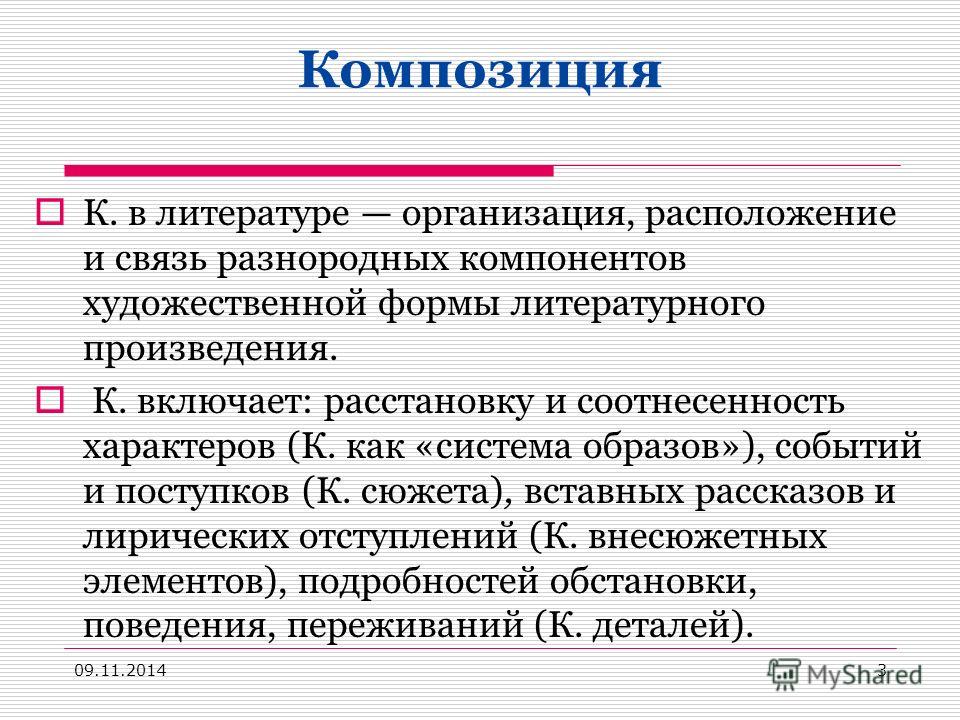
In these magical experiences, the art prescribed by Taoism and Buddhism in China, Japan and Tibet is very rich and deep. Even the most inexperienced feel by the time of their creation that a magical impression is easy. The term "magic" is correct, from a historical point of view, because in fact this language of forms comes originally from representations, signs, help and magic cabinets. But the impression they give does not depend on this historical association, since it occurs even when nothing is known about it.
Composition In the plastic arts (Fine art, fine arts, architecture, photography), composition combines particular aspects of the construction of an artistic form (real or illusory formation of space and volume, symmetry and asymmetry, scale, rhythm and proportions, perspective, grouping, color solution etc.). K. organizes both the internal construction of the work and its relationship with environment and the spectator.
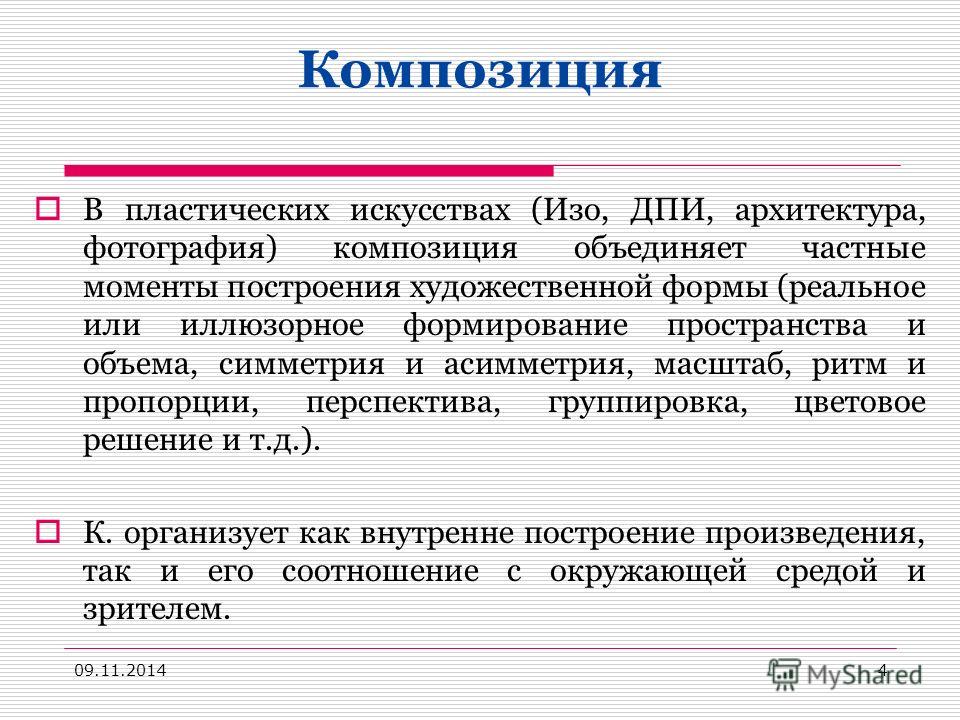
Moreover, it is then that it is more intense and pure. There is no doubt that art here finds a way to evoke, without reflection, an impression of a very peculiar character: namely, the impression of the magical. But the magical is only a hidden and veiled form of numinosis, at the same time as the primary and still crude form of numinous feeling, which great art presents later, already ennobled and transfigured. Then we can't talk about "magic" anymore. This statement may not correspond exactly to any art, like Chinese, religious and landscape painting, during the classical times of the Tang and Song dynasties.
The composition of architecture in architecture is based on the harmonious correlation of ideological and artistic principles, functional purpose, design features and town-planning role of buildings. K. determines the appearance, planning and volume-spatial construction of the city as a whole or an architectural ensemble, a separate building or structure. K. in fine arts represents a specific development of the ideological and plot-thematic basis of the work with the distribution of objects and figures in space, establishing the ratio of volumes, light and shadow, spots of color, etc.

These works are among the most profound and sublime that human art has ever created. One who runs into them sees that beyond these waters, mists and mountains, the ancient Tao, the vibration of an intimate being, deeply encourages. In these images, between the hidden and the manifest, lies a deeper mystery. There is the knowledge of nothingness, the knowledge of "emptiness", the knowledge of the Tao of heaven and earth, which is also the Tao of the human heart. And therefore, in spite of their eternal agitation, these images seem so distant and calm that they are said to mysteriously encourage under the sea.
Composition K. in music, that is, the structure of a musical work or musical form. Musical form is the compositional plan of a musical work, its structure. The smallest semantic and structural unit of the musical form is the motive, and its initial integral component is the musical theme.
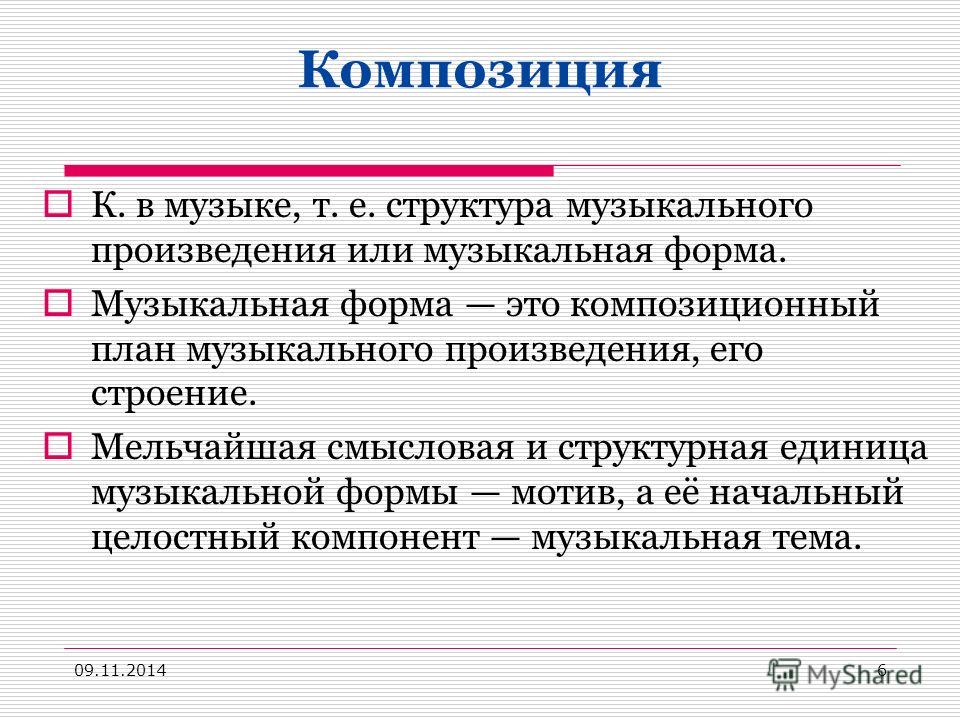
However, for Westerners, the art that best expresses the numinous is Gothic, precisely because of its sublimity. Worringer is credited with showing in his book "The Essence gothic style," the singular impression that Gothic art provokes lies not in its grandeur, but still retains the imprint and heritage of the ancient magical ways which Warringers deals historically. Thus, in his opinion, the impression of the Gothic is mainly magical in nature. Nothing to do with the legitimacy of his historical deduction, with which he found the true key; one does not depend on the other.
Composition In music, form means the organization of the musical whole, ways of developing musical material, as well as genre designations that the authors give to their works, for example: song, romance, ballad, prelude, etc. Composition forms in music are based on the principles of repetition and repetition known to you. contrast.

Gothic art "enchants", "enchants", and this impression is greater than that of the sublime. But, on the other hand, the tower of the Ulm Cathedral is no longer magical, but numinous. And the difference between the numinous and the magical is left to feel in the beautiful reproduction of this marvel that Worringer inserts into his book. It does not matter that the magic word is used to designate the style and expressive medium by virtue of which the numinous impression is created. They will perceive all this, of course, in the deepest sense.
But sublime, magical, no matter how they act, are only indirect means in the presentation of polysemantic art. In the West we have only two straight lines. But both are essentially negative in character. It is darkness and silence. The darkness should be such that it is done in reverse, so that it becomes more visible. You must be able to win the last clarity. Only twilight "mystical". And his impression is perfected when it is connected with auxiliary element sublime.
Form Form is the sum of techniques, expressive and visual means for creating an artistic image in any art form. Thanks to the form, an external expression of a certain content is born, for example, figurative form, musical form, poetic form. AT different types art external expression has its own characteristics.

“The Lord is in His holy temple; street before Him the whole world. Neither we nor the singer know that this silence historically arose from "euphemism", that is, from the fear of using ominous words and, therefore, from the conviction that it is better to remain silent. We, the psalmist and Terstegen, when he says: "God is present, everything is in us", we feel the need to remain silent, as if from another stimulus, completely independent of him. In us, silence is the direct effect of the presence of number. Again, in this case, the historical-genetic sequence explains the phenomenon, which then occurs in the higher stages of evolution.
Rhythm Rhythm reflects the connection of nature, man and his activities with the universe. The word rhythm means "measurement". The rhythm was formed under the influence of human activity: step, dance, spell, crying, lamentation, motion sickness of the child, everyday speech, stages of work. Rhythm is also prompted by nature: the heartbeat and pulse of a living organism, the singing of birds, movement sea waves etc. Such rhythms are understandable to all people. With the help of rhythm, you can express states of peace and serenity, greatness and stability, fussiness and fear.

It is for this reason that the Psalmist, we, and Terstegen are living data for the psychological study of religion, data no less interesting than the primitive ones when they obeyed their "euphemism." In addition to darkness and silence, Oriental art knows a third way of awakening the numinous impression: emptiness, the great emptiness. An indefinite void is, so to speak, an elevated horizontal position. The expanded desert, the indefinite and unified steppe, is sublime and serves as a stimulus for awakening, unification of feelings, numinous resonance.
Proportions In European culture in the Middle Ages, the vertically elongated proportions of cathedrals created images that were consonant with the human soul aspiring to heaven in an emotional outburst. In ancient Russian art, the expressive proportions of architectural buildings carried images that unite man with nature.
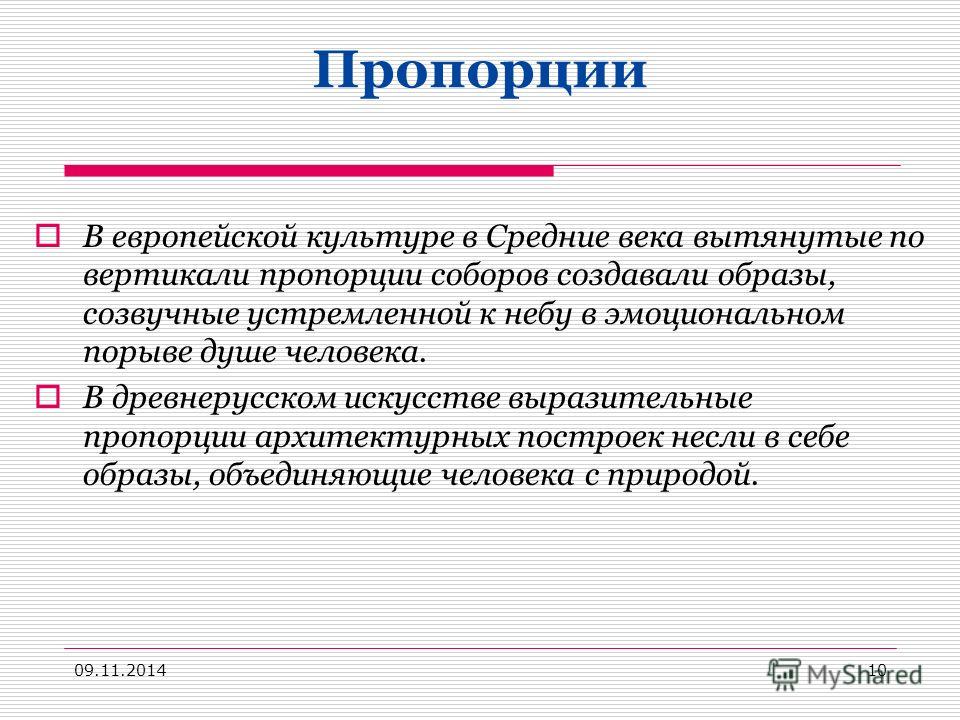
Chinese architecture, as the art of layout and grouping of buildings, has made use of vast empty spaces in the wisest and most profound way. This creates an impression of solemnity; but not by high porticoes or superposition of verticals, but by extended horizontality. There is nothing more solemn than the quiet range of squares, patios and atriums that are used. A prime example is the Ming imperial tomb, in Nanjing and Beijing, where the empty latitude of the entire landscape is located in his factory. But the "emptiness" in Chinese painting is even more interesting.
Proportions
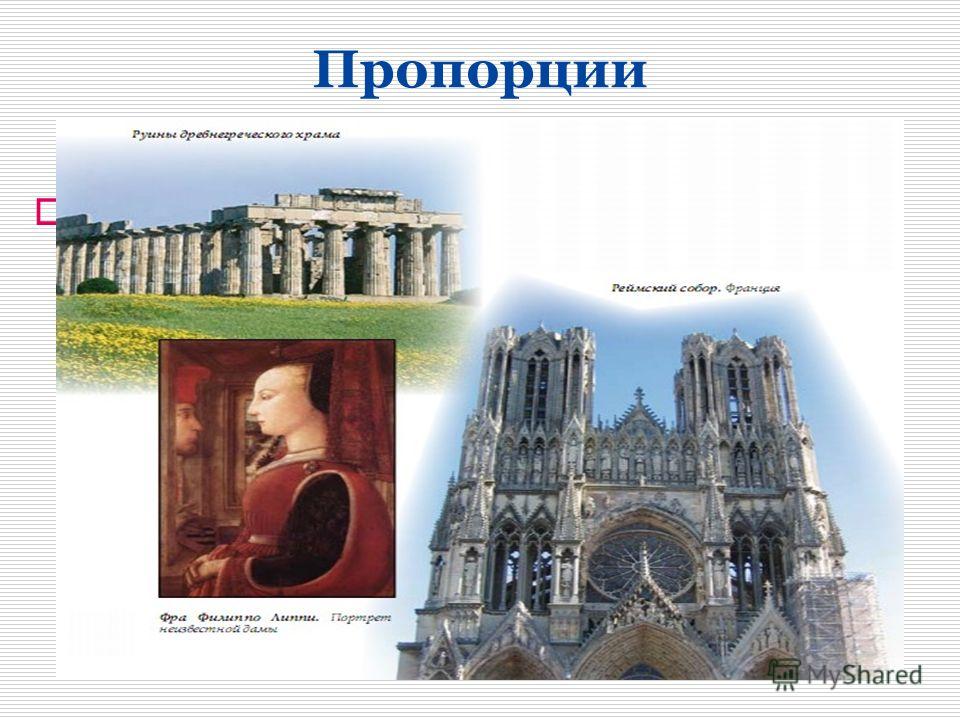
The proportions of the image of the human head


Proportions of the image of a person

There is an art here to paint the void, to make it sensitive and to modulate this theme with the most different ways. Not only are paintings composed of "almost nothing" not only the artistic style that creates the strongest impression with a few lines and means, but in front of many paintings, especially those associated with contemplation, that the vacuum itself is one of the objects painted, possibly a metropolitan object. You cannot understand this unless you remember what we said earlier about "nothingness" and the emptiness of the mystics and the beauty of negative hymns.
Disproportions

Ideal Proportions

Incredible proportions

Texture Texture (from lat. factūra processing, structure) the nature of the surface of a work of art, its processing in the visual arts, the originality of artistic technique in poetry, music, painting or sculpture.lat. Texture is also understood as the decorative and applied characteristics of the surface. various materials from a tactile-visual point of view, for example, "wood texture"
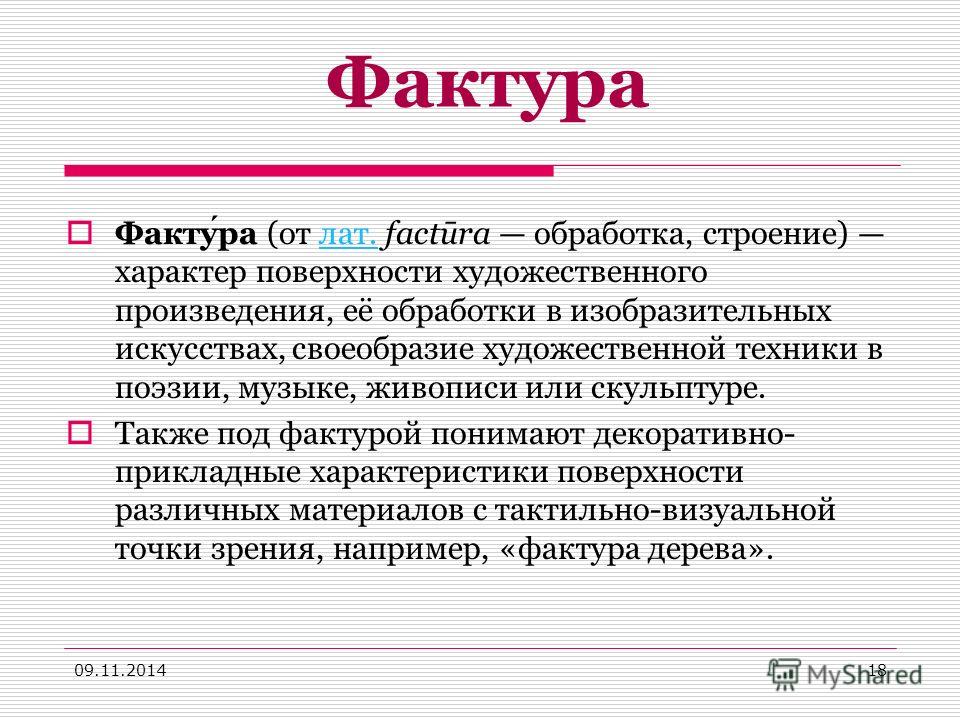
Like darkness and silence, emptiness is a negation that eliminates consciousness from here and now and thus makes the present and present what we have called "absolutely heterogeneous." Music, which can express more than all feelings, has no positive means of expressing holiness. The most sacred and most numismatic moment of the Mass, the consecration, is expressed even in the best weight filled with silence; the music is mute and mute for a long time and completely, so that silence itself is heard, so to speak. The intense betrayal of this "silence before the Lord" is never achieved by music.
Texture In the fine arts, texture is the nature of the surface treatment of an item of decorative and applied art, sculpture, or a pictorial plane, a way of conveying the features of real objects (velvet, silk, bronze, etc.) by visual means. This is also a set of technical techniques of the artist: guiding the brush, applying layers of paint, hitting the chisel, polishing

At this point it is very instructive to consider Bach's lower mass. Its most mystical part, as usual, is in the melodies of the Incarnatus mass. The effect it produces is successive recordings of the fugue that whispers softly and is delayed more and more until it cuts out in pianissimo. In this fragment it is pointed out more that the mystery is expressed through the closed breathing, the half voice and that strange downward modulation in diminished thirds, those arrested syncopations that rise and fall in strange undertones that reflect terrible astonishment.
Texture (wood)
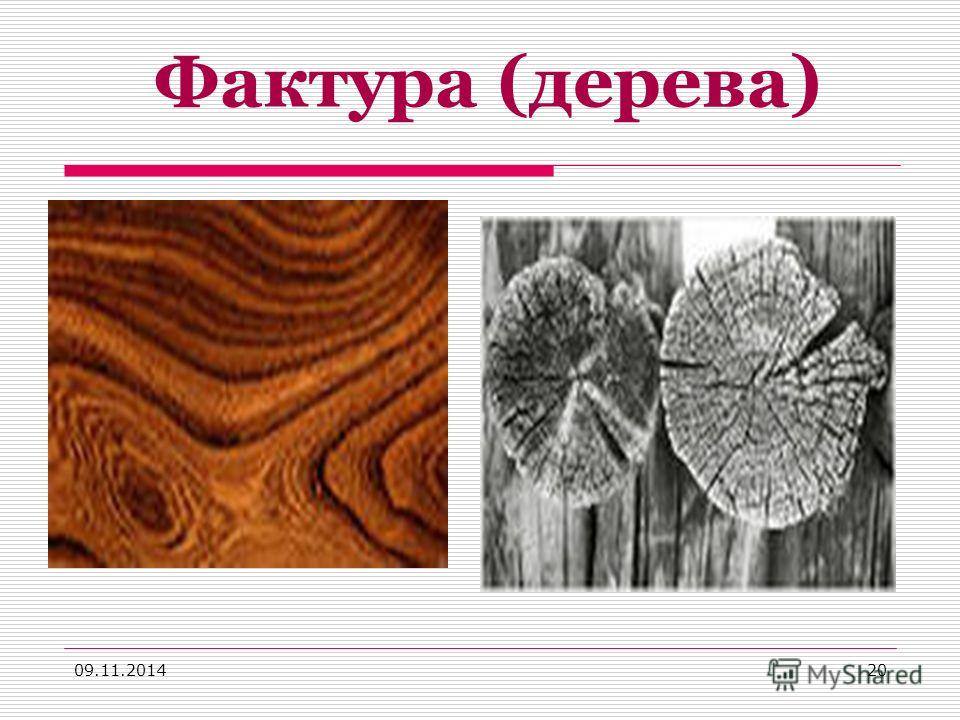
Texture (sand)

Texture (fabrics)
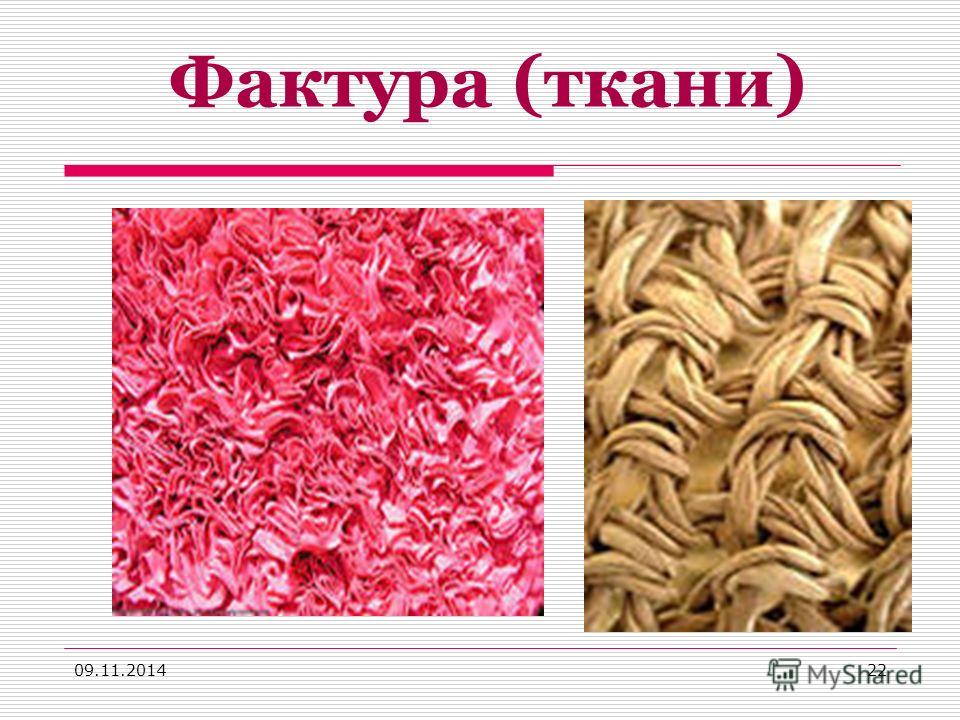
Texture (frescoes)

By means of these procedures, Bach achieves his goal in this passage better than in the Sanctus. It is an almost complete and incomparable expression of One who has power and splendor, a noisy chorus of triumph dedicated to the perfect, absolute glory of the king. In this magnificent chant of Bach, one cannot understand that the seraphim cover their faces with their two wings. On the other side, Jewish tradition she was very well aware of what had happened here: "All the forces of height whispered softly: God is the King." Thus speaks of the great hymn "Melek Elion" on the New Year.
And here too, in fact, the expression is less in the music itself than in its fading, holding back, one could almost say in its rapture, as the Berlin Cathedral choir knows masterfully in this passage. This retort also trembles and trembles. Abstract art or abstractionism is a modern visual art style that favors abstract forms to the detriment of objects and figures that represent something from our own reality. Thus, it can be argued that abstract art is the opposite of realism and photography, so it required an imagination or understanding that went beyond the logical, observing the picture.
Watercolor ( artistic techniques ISO) Watercolor (from Italian aquarello) - means painting with paints on water based. There are varieties of watercolor techniques: in a dry way - painting on dry paper, with drying each layer of paint before applying the next one in a wet way, wet watercolor, alla prima - painting on wet paper

Abstract art is characterized by the fundamental use of basic forms of plastic language such as figures, lines and colors as a means of artistic expression. In this sense, abstract art is distinguished by the fact that it transcends representation. appearance things and creates a plastic search, aimed rather at formal, chromatic and structural aspects. Consequently, abstraction uses the most essential resources of plastic language to try to create an autonomous language that evokes their own feelings.
BATIK (artistic art techniques) Batik (from Indonesian wa - cotton fabric and tik - dot) - pattern on fabric
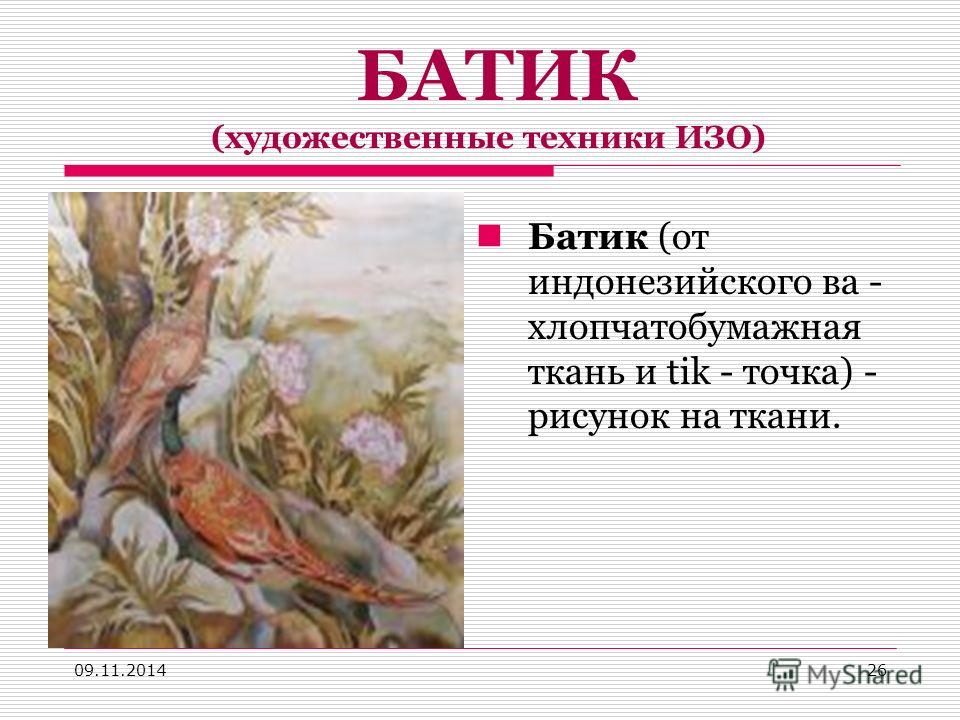

Mosaic (artistic art techniques) Mosaic (fr. mosaïque, Italian mosaico from lat. (opus) musivum - a work dedicated to the muses) - decorative, applied and monumental art of various genres, the works of which involve the formation of an image by arranging, typing and fixing on a surface colorful stones, smalts, ceramic tiles and other materials. 28
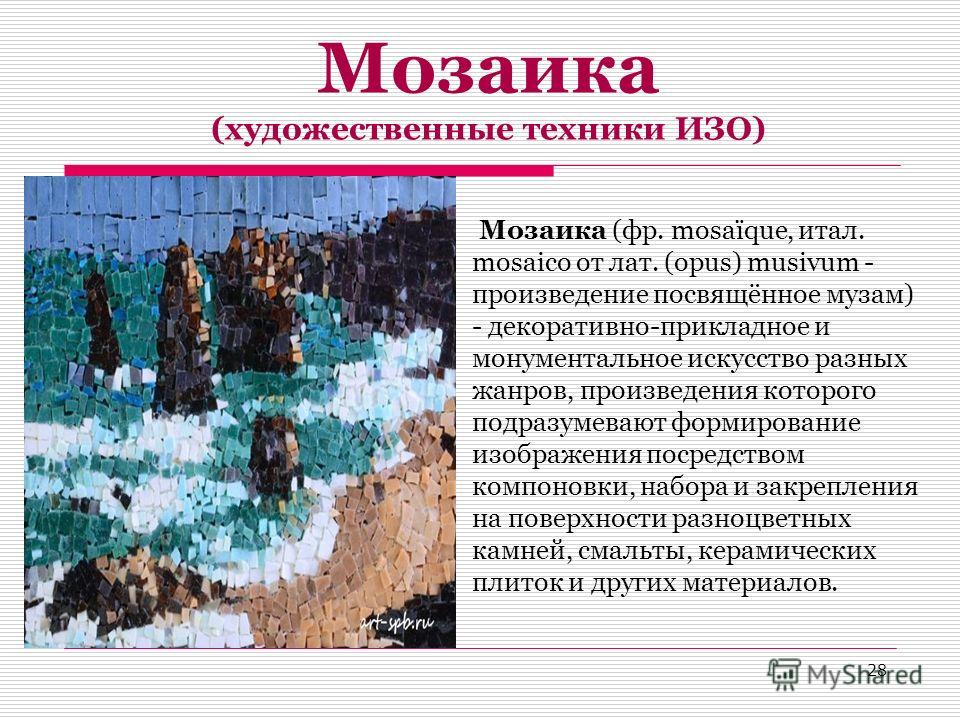 Task Understand and explain the meanings of terms: composition, texture, proportion, rhythm, form. Pick up works of art, which would be associated with one of the familiar pieces of music. Argument the features of the implementation of your search
Task Understand and explain the meanings of terms: composition, texture, proportion, rhythm, form. Pick up works of art, which would be associated with one of the familiar pieces of music. Argument the features of the implementation of your search
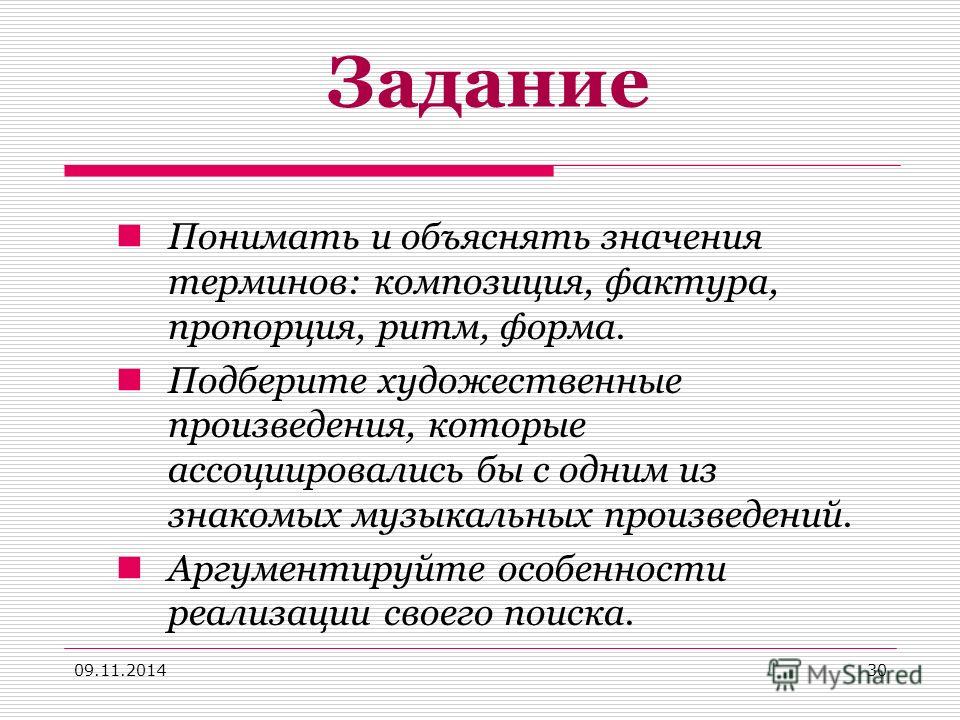
How does art influence? Thank you for your attention!

Artistic and expressive means of painting includecolor, stroke, line, spot, color and light contrast, coloring, shape, composition, texture.
Colour. Each living and inanimate object has its own color. Just like color, lighting plays a huge role. The impact of color, location in space, the state of the air affects the color. The beauty that we admire and love is the colorful richness of reality, or otherwise colors.
The artist conveys with the help of color, color sensations, color combinations, harmony of cold and warm colors all kinds of moods, feelings. And treat them - joy, expectation, anxiety, sadness, tenderness.
Stroke in painting - a trace of a brush with paint left by the artist on canvas, paper, cardboard. The technique depends on the individual style of the artist, it is very diverse.

line and spot – a clear outline of the paint specific subject on the canvas. A spot is a tonal, silhouette image of an object. For example, in order to better understand this expression, let's analyze a spot - a snowy spruce against the background of the distant sky. Or a hill in the dark night sky. The line is easier to imagine by looking at any picture. Clear lines outline the shadow of one or another object, reinforcing feelings of sadness or joy.

Color and light contrast in painting, an example is the sharply distinguishing light and dark relationships of spots, areas of the picture.
coloring - a system of color tones, their combinations and relationships in a work of art.
Texture - the surface of the paint layer of a painting: glossy or matte, continuous or discontinuous, smooth or uneven.
Composition - the location of all objects, elements and parts of the work in a certain system and sequence for better disclosure of the artistic image.
Here we will considershape and design (structure) of the object, we will see artistic and expressive means -tone, stroke, line.


The form of objects is determined by outlines, contour, silhouette. In a simplified form - a square, a triangle, a circle, a rectangle. Each item in a simplified form is similar to a geometric figure. For example, the ball round shape, TV - a rectangle, a clown's carnival cap - a triangle.
Design (structure) of objects - the basis of the handicap, the framework of the structure of objects. The design of each object is one or another geometric body. Geometric bodies - cylinder, ball, cone, parallelepiped, cube, pyramid. Very often, when considering an object, we see that it has several geometric bodies. In drawing, there is a drawing method, or it is more often called “draft”, when you draw its structure, construction, which are not visible to our eyes.
Silhouette in fine art (graphic technique) is a kind graphic image subject. This is a one-color, planar image of an object. Usually silhouettes are drawn with ink on a light background, or on a black background with whitewash, or a figure is cut out of dark or light paper and glued onto a sheet of a different tone.
Composition in pictorial graphics - the location of all objects, elements and parts of the work in a certain system and sequence for better disclosure of the artistic image. The composition is presented in a circle, in a square, an oval, in a rectangle.

Expressive means painting, the sequence of thematic composition, the artist, pre-doessketches, sketches, drawings, sketches,
thus creates a picture.






